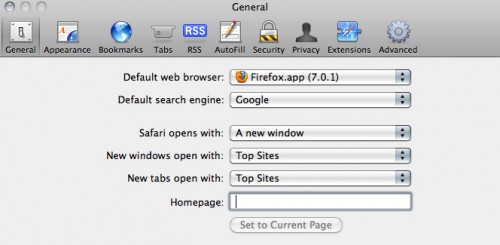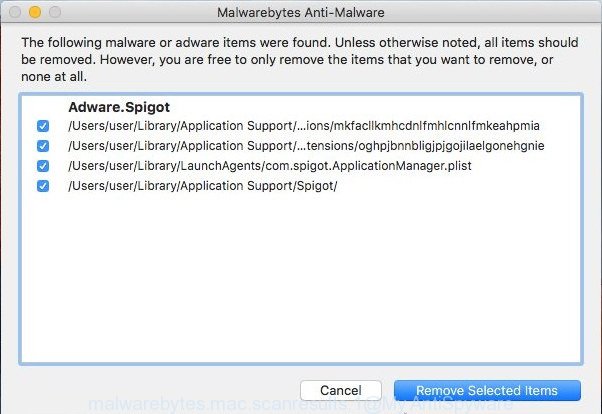What is WebFunctionSearch
According to security professionals, WebFunctionSearch is a potentially unwanted application (PUA) that falls under the category of Adware . Adware is ‘advertising supported’ software which tries to generate profit by redirecting you to unwanted websites or online ads. It has different methods of earning profit including displaying up adverts on the web-browser forcefully. Most of adware gets installed when you are downloading free programs or browser extensions.

Unwanted ads
Even worse, adware can install a component which enables its author to track which web pages you visit, which products you look at upon those pages. They are then able to select the type of ads they display you. So, if you had adware software on your Apple Mac, there is a good chance you have another that is gathering and sharing your data with third parties, without your say-so.
So, if you happen to encounter the adware, then be quick and take effort to remove it as soon as possible. Follow the few simple steps below to get rid of WebFunctionSearch adware. Let us know how you managed by sending us your comments please.
How does WebFunctionSearch get on your MAC OS
Adware spreads with various free applications. This means that you need to be very careful when installing applications downloaded from the Internet, even from a large proven hosting. Be sure to read the Terms of Use and the Software license, choose only the Manual, Advanced or Custom installation method, switch off all bundled browser addons and programs are offered to install.
Threat Summary
| Name | WebFunctionSearch, Web Function Search 1.0 app |
| Type | adware software, potentially unwanted application (PUA), pop ups, popup advertisements, pop-up virus |
| Symptoms |
|
| Removal | WebFunctionSearch removal guide |
How to remove WebFunctionSearch adware
If you have constant pop ups or undesired ads, slow Apple Mac, freezing MAC system issues, you are in need of adware removal assistance. The step-by-step instructions below will guide you forward to get WebFunctionSearch adware removed and will assist you get your MAC operating at peak capacity again.
To remove WebFunctionSearch, complete the following steps:
- How to manually remove WebFunctionSearch
- Automatic Removal of WebFunctionSearch
- How to stay safe online
- To sum up
How to manually remove WebFunctionSearch
In this section of the article, we have posted the steps that will help to delete adware manually. Although compared to removal utilities, this method loses in time, but you don’t need to install anything on your MAC OS. It will be enough for you to follow the detailed instructions with pictures. We tried to describe each step in detail, but if you realized that you might not be able to figure it out, or simply do not want to change the MS Windows and web-browser settings, then it’s better for you to run tools from trusted developers, which are listed below.
Delete adware through the Finder
First, you should try to identify and delete the program that causes the appearance of intrusive ads or web-browser redirect, using the ‘Applications’ list that located in the Finder.
Open Finder and click “Applications” as displayed in the figure below.

You will see a list of programs installed on your Apple Mac. We recommend to pay maximum attention to the program you installed last. Most probably, it is the WebFunctionSearch adware. If you’re in doubt, you can always check the program by doing a search for her name in Google, Yahoo or Bing. After the program which you need to uninstall is found, simply right press on its name, and select “Move to Trash”.
Don’t forget, select Finder, then “Empty Trash”.
Remove WebFunctionSearch from Google Chrome
Reset Google Chrome settings will help you to completely reset your browser. The result of activating this function will bring Chrome settings back to its original settings. This can delete WebFunctionSearch ads and disable malicious extensions. It will keep your personal information such as browsing history, bookmarks, passwords and web form auto-fill data.
First launch the Chrome. Next, press the button in the form of three horizontal dots (![]() ).
).
It will show the Google Chrome menu. Select More Tools, then press Extensions. Carefully browse through the list of installed extensions. If the list has the extension signed with “Installed by enterprise policy” or “Installed by your administrator”, then complete the following instructions: Remove Google Chrome extensions installed by enterprise policy.
Open the Google Chrome menu once again. Further, click the option called “Settings”.

The web browser will open the settings screen. Another method to show the Chrome’s settings – type chrome://settings in the browser adress bar and press Enter
Scroll down to the bottom of the page and click the “Advanced” link. Now scroll down until the “Reset” section is visible, as on the image below and click the “Reset settings to their original defaults” button.

The Chrome will display the confirmation prompt as displayed on the screen below.

You need to confirm your action, press the “Reset” button. The web-browser will start the task of cleaning. After it is complete, the internet browser’s settings including startpage, search engine and newtab page back to the values that have been when the Chrome was first installed on your MAC OS.
Remove WebFunctionSearch adware software from Mozilla Firefox
This step will allow you delete WebFunctionSearch ads, third-party toolbars, disable malicious addons and return your default home page, newtab and search engine settings.
First, open the Mozilla Firefox. Next, press the button in the form of three horizontal stripes (![]() ). It will show the drop-down menu. Next, press the Help button (
). It will show the drop-down menu. Next, press the Help button (![]() ).
).

In the Help menu press the “Troubleshooting Information”. In the upper-right corner of the “Troubleshooting Information” page click on “Refresh Firefox” button as displayed on the screen below.

Confirm your action, click the “Refresh Firefox”.
Get rid of WebFunctionSearch adware software from Safari
By resetting Safari browser you revert back your web-browser settings to its default state. This is basic when troubleshooting problems that might have been caused by the WebFunctionSearch adware software.
Run Safari browser. Next, choose Preferences from the Safari menu.

First, click the “Security” icon. Here, choose “Block pop-up windows”. It will stop some types of pop-ups.
Now, click the “Extensions” tab. Look for questionable extensions on left panel, select it, then click the “Uninstall” button. Most important to remove all questionable addons from Safari.
Once complete, check your startpage and search provider settings. Click “General” tab. Make sure that the “Homepage” field contains the website you want or is empty.

Make sure that the “Search engine” setting shows your preferred search provider. In some versions of Safari, this setting is in the “Search” tab.
Automatic Removal of WebFunctionSearch
If you are not expert at MAC system technology, then we advise to use free removal utilities listed below to remove adware software for good. The automatic method is highly recommended. It has less steps and easier to implement than the manual method. Moreover, it lower risk of system damage. So, the automatic WebFunctionSearch removal is a better option.
Run MalwareBytes to remove WebFunctionSearch adware
Delete WebFunctionSearch manually is difficult and often the adware is not completely removed. Therefore, we suggest you to run the MalwareBytes Free that are fully clean your MAC. Moreover, this free application will help you to get rid of malware, PUPs, toolbars and hijacker infection that your Apple Mac can be infected too.

MalwareBytes Free can be downloaded from the following link.
21174 downloads
Author: Malwarebytes
Category: Security tools
Update: September 10, 2020
After the download is finished, run it and follow the prompts. Press the “Scan” button to perform a system scan with this utility for the WebFunctionSearch adware. A system scan can take anywhere from 5 to 30 minutes, depending on your MAC. While the MalwareBytes is scanning, you can see how many objects it has identified either as being malware. All found items will be marked. You can remove them all by simply click “Remove Selected Items” button.
The MalwareBytes Anti-Malware is a free application that you can use to delete all detected folders, files, malicious services and so on.
How to stay safe online
In order to increase your security and protect your MAC against new unwanted ads and malicious web-sites, you need to use ad-blocking application that stops an access to malicious advertisements and web pages. Moreover, the program can stop the display of intrusive advertising, which also leads to faster loading of webpages and reduce the consumption of web traffic.

- Installing the AdGuard is simple. First you’ll need to download AdGuard on your Windows Desktop from the following link.
AdGuard for Mac download
3886 downloads
Author: © Adguard
Category: Security tools
Update: January 17, 2018
- Once downloading is done, start the downloaded file. You will see the “Setup Wizard” program window. Follow the prompts.
- After the setup is finished, click “Skip” to close the installation application and use the default settings, or press “Get Started” to see an quick tutorial which will assist you get to know AdGuard better.
- In most cases, the default settings are enough and you do not need to change anything. Each time, when you launch your Apple Mac, AdGuard will start automatically and stop undesired ads, block malicious and misleading websites.
To sum up
After completing the step-by-step guide above, your MAC system should be free from the WebFunctionSearch adware and other malware. The Mozilla Firefox, Safari and Google Chrome will no longer redirect you to various unwanted web-sites. Unfortunately, if the step-by-step guidance does not help you, then you have caught a new adware, and then the best way – ask for help here.

















